- Register
- Log in to Tune-In
- Wishlist (0)
-
Shopping cart
(0)
You have no items in your shopping cart.
Beatles News
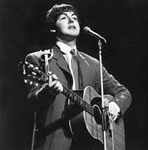
The Beatles had many of their songs written by the Lennon-McCartney songwriting partnership. The duo, made of up Paul McCartney and John Lennon, wrote dozens of songs for the band, including Yesterday, Come Together, In My Life, Get Back, All You Need Is Love and many more.
It has now been revealed that the most popular song is a track that was predominantly written by McCartney.
Over 2,000 listeners of Union JACK Radio cast votes on what the best Beatles song of all time is, and today it has been announced.
The poll marked the four best songs from The Beatles, starting with Hey Jude.
The piano-led ballad is followed by the classic banger Eleanor Rigby.
Source: Callum Crumlish/express.co.uk
details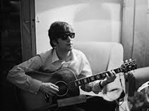
It’s Beatlemania all over again: half a century after the Fab Four split, the Liverpudlians are once more dominating the cultural conversation thanks to Peter Jackson’s sprawling seven-hour documentary Get Back. In a recent five-star review, The Independent’s Ed Cumming argued that the film is so revelatory that “any future assessment of the band and its members will have to measure up against the people we see here”.
While Jackson’s film captures the pioneering band during the tumultuous recording sessions for their final record, 1970’s Let It Be, there was still plenty more to come from the four musicians. Over the course of the next decade, John Lennon released seven solo studio albums before he was assassinated by Mark David Chapman on 8 December 1980, 41 years ago this week. An eighth record, 1984’s Milk and Honey, followed posthumously.
These solo records feature some of the most famous and significant work of Lennon’s career, including activist anthems “Give Peace a Chance” and “Imagine” and perennial festive favourite “Happy Xmas (War Is Over)”. Look beyond the hit singles and there are still plenty more gems to be details

Convincing the masses to watch a three-part, eight-hour docuseries on a band that broke up over 50 years ago? The only subject monumental enough to make that possible is the Beatles. Peter Jackson’s Get Back follows the band members through the making of the last studio album they would release together, Let It Be, and everything that happened behind the scenes that led to the end, showing never-before-seen footage and giving an in-depth look into the power dynamics among the bandmates. Any casual fan could tell you what became of Lennon, Harrison,
Source: Meredith Moran/slate.com
details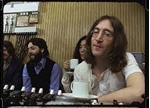
Mr. Hester is the editor in chief of The City and the author of “Raising a Beatle Baby: How John, Paul, George and Ringo Helped Us Come Together as a Family.”
Paul McCartney is stressing out.
At various points in “The Beatles: Get Back,” the three-part, nearly-eight-hour documentary chronicling the 1969 sessions that would lead to the band’s final public performance, Mr. McCartney is clearly more frustrated at the creative and interpersonal roadblocks to the group’s progress than any of his bandmates are.
But Mr. McCartney is also the Beatle most visibly invigorated by a daunting challenge.
Source: Jere Hester/nytimes.com
details
After the Beatles disbanded, McCartney emerged as a solo artist, and then formed the band Wings, together with his first wife Linda and Denny Laine. The group’s debut studio album - Wild Life - was remarkably recorded in only eight days and quickly found a place in the top 10 after its release in December 1971. On the album’s 50th anniversary (December 7, 2021) McCartney revealed that there is going to be a reissue of the Wings’ debut LP, this time as a limited edition half-speed mastered vinyl pressing. What fans of the musical genius may not know is that at the height of his fame, McCartney suffered with mental health issues, but instead of facing his demons, he and his fellow bandmates used their craft to make light of the issues.
Source: Lauren Russell/express.co.uk
details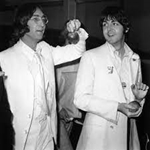
John Lennon was assassinated on December 8, 1980 at the age of just 40-years-old. It had been a decade since The Beatles broke up, but had he truly made up with Paul McCartney before his untimely death? During his last hours, the star gave his final interview and actually had some lovely things to say about his songwriting partner.
Related articles
Last year, Express.co.uk spoke with Kenneth Womack, author of John Lennon 1980: The Last Days In The Life.
Instead of focusing on his murder, the book celebrates all the creative activities the Beatle was up to during his final year.
When asked if Lennon and McCartney were truly made up by the time of his death, the author said there was clear evidence that this was the case.
Womack said: “I do think so. I don’t think there’s any doubt about that. I think they were good in the ways they needed to be.”
Source: George Simpson/express.co.uk
details
Denis O’Brien, the former manager of George Harrison, has died aged 80.
O’Brien’s daughter, Kristen O’Brien, told The Associated Press (via Billboard) that her father passed away at the Great Western Hospital in Swindon last Friday (December 3).
He had been admitted for severe abdominal pains although an exact cause of death has not yet been determined.
Kristen said that Denis was essentially retired over the past 20 years and had been “enjoying life with his wife, Phyllida O’Brien”, who died in 2019. He was married four times.
A native of St. Louis, Missouri, O’Brien relocated to Europe after receiving a law degree from Washington University.
Source: Tom Skinner/nme.com
details
Like any good story, the documentary about the making of the Beatles’ latest album — neither of which existed yet — needed a climax.
It was Jan. 30, 1969, and the world-renowned rock band decided to stage a performance on the roof of its Apple Corps building in London for family, friends and film cameras. The 42-minute show became the grand finale of the band’s documentary, “Let It Be.”
It was also the last public performance that the most commercially successful band in history would ever give. As police shut down the show for causing a ruckus, John Lennon declared: “I’d like to say thank you on behalf of the group and ourselves, and I hope we passed the audition.”
“It wasn’t an audition,” said Beatles historian Mark Lewisohn. “But they always had the perfect lines.”
The rooftop show and the associated “Let It Be” album are a
Source: Marisa Iati/washingtonpost.com
details
Convincing the masses to watch a three-part, eight-hour docuseries on a band that broke up over 50 years ago? The only subject monumental enough to make that possible is the Beatles. Peter Jackson’s Get Back follows the band members through the making of the last studio album they would release together, Let It Be, and everything that happened behind the scenes that led to the end, showing never-before-seen footage and giving an in-depth look into the power dynamics among the bandmates. Any casual fan could tell you what became of Lennon, Harrison, McCartney, and Starr after the Beatles fell apart, but the series has introduced casual fans to a whole new cast of characters: the musicians, producers, lovers, and hangers-on who made the sessions what they were—for good and for bad. Yoko Ono’s a household name, and most viewers probably know a thing or two about Linda Eastman as well, but what happened to the rest of
Source: Meredith Moran/slate.com
details
During a November discussion with B&N CEO James Daunt, legendary Beatle Paul McCartney revealed that when The Beatles first entered the music scene, the band was excited just to be making money.
“It was only later that we discovered that what we were doing was art, and there were things like muses,” McCartney said, adding, “When we first got out of Liverpool, it was money … we were kids without jobs, suddenly there was a job, and so we wanted to get paid, and the more money, the better.”
Though McCartney said the band enjoyed having money and made jokes — such as, “‘Well, let’s write a swimming pool! You need a new extension, let’s write it. Come on, sit down’” — McCartney believes that money and art don’t need to be mutually exclusive.
Source: By Jenna Romaine/thehill.com
details
“Get Back,” Peter Jackson’s three-part, nearly eight-hour documentary series chronicling the few weeks in which the Beatles wrote and created “Let It Be,” has enthralled fans of the Fab Four since it was released on Thanksgiving Day.
The documentary finds the band facing a looming deadline while simultaneously feeling the pull of their individual creative endeavors. Its hours of previously unseen footage find John Lennon, Paul McCartney, George Harrison and Ringo Starr in turn collaborating, bickering and laughing; bored, anxious, angry and gleeful. Throughout it all, classic songs like “The Long and Winding Road,” “I Me Mine” and “Don’t Let Me Down” emerge.
Source: Travis M. Andrews/washingtonpost.com
details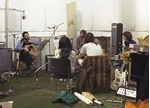
Our culture lionizes independent thinkers and creators, from Beethoven to Einstein to Musk. Eccentric, driven, working alone in their garrets and labs, they are struck by inspiration and change the world – call it the cult of genius.
Get Back, filmmaker Peter Jackson’s new three-part, eight-hour documentary series about the Beatles, reminds us that the process of creation is often a more complicated affair, involving not a single prodigy but a group of individuals labouring together, elevating each other – and, if they are both talented and lucky, producing something great.
Source: Marcus Gee/theglobeandmail.com
details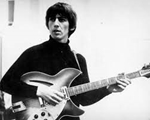
George Harrison of The Beatles felt listeners could learn a lot about Cat Stevens (also known as Yusuf and Yusuf Islam) from his songs. George had a very strong opinion on Stevens as a musician. During an interview, he revealed what he thought about Stevens taking a long break between albums.
George responded enthusiastically to Stevens “Yeah, I like Cat Stevens a lot — actually before, earlier when you asked me who I like, Cat Stevens has been a consistent person that I’ve enjoyed,” he said. “I’ve always liked his voice, he’s got a lovely voice, and he always seems to have style, class, you know? Good melodies, good production.”
George then commented on Stevens’ life. “And also, I think in his life he’s been through a lot of heavy ups and downs, and I don’t blame him for taking two years to make a record,” George said, laughing. “You know, I like him a lot.”
Source: cheatsheet.com
details
English actress Hayley Mills joined host Kenneth Womack to talk about being born into a show business family, having a Beatle take her on a date, writing her new memoir and more on "Everything Fab Four," a podcast co-produced by me and Womack (a music scholar who also writes about pop music for Salon) and distributed by Salon.
Multiple award-winner Mills, whose father is legendary actor Sir John Mills and mother novelist-playwright Mary Hayley Bell, got her start in acting at the age of 12 in the British crime drama "Tiger Bay." Hailed as a child screen prodigy, Mills went on to star in six Disney films in six years including "Pollyanna" and "The Parent Trap," making her a breakout star in the early 1960s – not unlike the Beatles.
Source: salon.com
details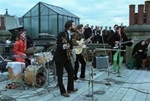
Peter Jackson's documentary series "The Beatles: Get Back" premiered on Disney+ over Thanksgiving weekend. The three-episode special, which ran 470 minutes, was culled from over 60 hours of original studio footage and 150 hours of audio recordings.
To preserve continuity, streamline themes, and get the final running time under eight hours, the following moments were edited out:
Day 1: Paul shows up to Twickenham Studios with 11 new songs, plus a formula for a future unknown pandemic vaccine he jotted down in the cab on the way over.
Day 2: Peter Sellers drops by Twickenham to say hello to Ringo, his co-star in the upcoming film, "The Magic Christian." The visit is cut short when Yoko Ono asks Sellers if he'll call her estranged husband's divorce lawyer and threaten him using the Clouseau voice.
Source: salon.com
details